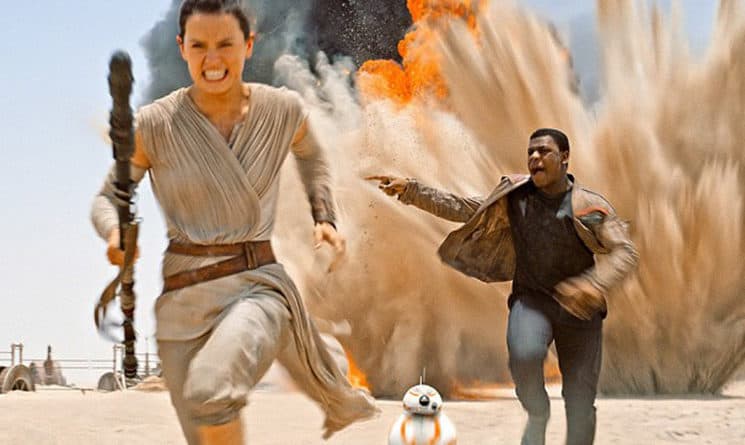It should never be forgotten that “Star Wars” was conceived by a motor head. George Lucas was raised a long time ago on a diet of smoked-out junkyard drag racers and cheap “Flash Gordon” serials. His attempt to bolt these components onto the chassis of a deeper, culture-spanning legacy of the monomyth was a legitimate gamble that turned out to be a wildly celebrated success. Though over the decades, popular consciousness may have come to interpret the impact of this combination as some kind of astronomically scaled epic tale, it should be noted that, beyond an undercurrent of universally accessible themes, “Star Wars: A New Hope” never spanned any galaxies. It only hinted at them. It dropped us into the middle of a larger story and allowed us to infer almost everything that led up to that point. The scope of the greater political struggle between the oppressed and their oppressors was indicated in the barest of mentions, almost as pure allegory, described in tight focus on a few scrappy characters navigating their way through some exhilarating situations, and ultimately just looking to connect with each other. The original “Star Wars” may have had some major power under the hood, but in itself, was a remarkably lightweight, nimble, little vehicle.
Somewhere between “Return of the Jedi” and “The Phantom Menace,” Lucas apparently started cracking under the pressure of his own press, and forgot he was making “Flash Gordon” and not “Ben-Hur.” His second trilogy attempted, with all the tools the spectacle of his first movies had themselves inspired, to make literal the larger vision of huge military forces clashing on a galactic level. Those films have been well and accurately slammed for ignoring the humanity at the heart of the adventure. Some said that Lucas himself had drifted too far into his own technological hubris to make a film that could connect on a personal, visceral level. He’d stopped building street-rods, and instead turned out a fleet of outlandishly over-engineered mini-vans.
This rebuild is immediately recognizable, but turns many of the expected conventions in on themselves.
So here we are. Ol’ George finally sold his shop, and there’s a new guy eyeing the track. There can be little coincidence that the opening shots of director J.J. Abrams’ “The Force Awakens” include a young tinkerer pulling pieces off a dusty giant of a machine from its crash site. Nor that the first spoken line of the film, “This will begin to make things right,” is growled out by veteran character actor Max Von Sydow, famous, among other things, for his key role in a remake of, yes, “Flash Gordon.”
Abrams may be working with a pile of completely recycled parts, but it could be said that all the best epic poems are designed to have certain rhyme to them. This rebuild is immediately recognizable, but turns many of the expected conventions in on themselves. Repeatedly, wide expansive shots of the environments, landscapes of conspicuously familiar deserts, forests, and snow, are interrupted by characters lurching into the frame, surprisingly close in the foreground. It’s as if Abrams has specifically identified a way to cinematically describe his goal — to give us something we think we’ve seen before, then burst the bubble with unexpected twists. He’s mighty good at this. Throughout the story, we’re offered all the beats, characters, conflicts, and questions we might remember from the first movie, but nearly every one is somehow reversed, inverted, or otherwise pulled inside out. The result is a remarkable combination of comfort and thrill. We might know exactly what’s going to happen, but have no idea what shape it will take. It’s satisfying and exhilarating in all the ways a good old-fashioned chapter play should be.
Of all the parts Abrams has scavenged together, from simple details of the gritty lived-in backgrounds and practical rubbery alien-folk, to the overall subtext of generational discord as a reflection of the renunciation of preeminent authority, it’s much to his credit that the element he most apparently wishes to emphasize in his rig is the speed, the rush, the joy of the ride. He’s effectively rolled back the dour, overinflated arc of Lucas’ series, downshifted, and hit the gas. In a market that seems to handsomely reward empty, unnecessary escalation, Abrams was given an almost unprecedented license to scale things back to manageable human proportions. He and his team have brought us back to the pulpy, white-knuckled, teeth-rattling roots from which the original sprung and which inspired generations of star-eyed rebels across the globe.
This, in the most complimentary sense, is your grandfather’s “Star Wars.” You can’t say they don’t make ’em like they used to anymore — Abrams just did.

